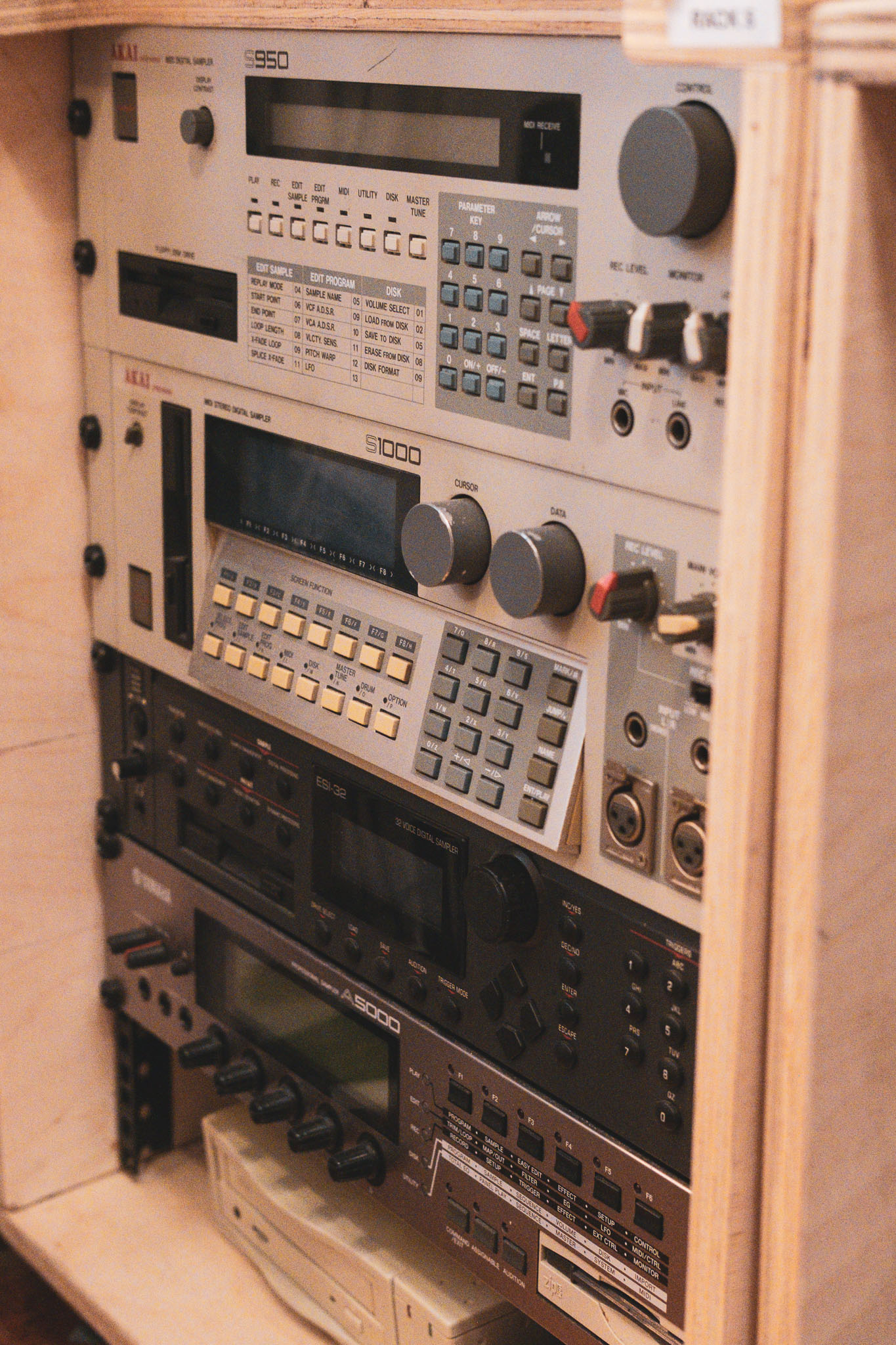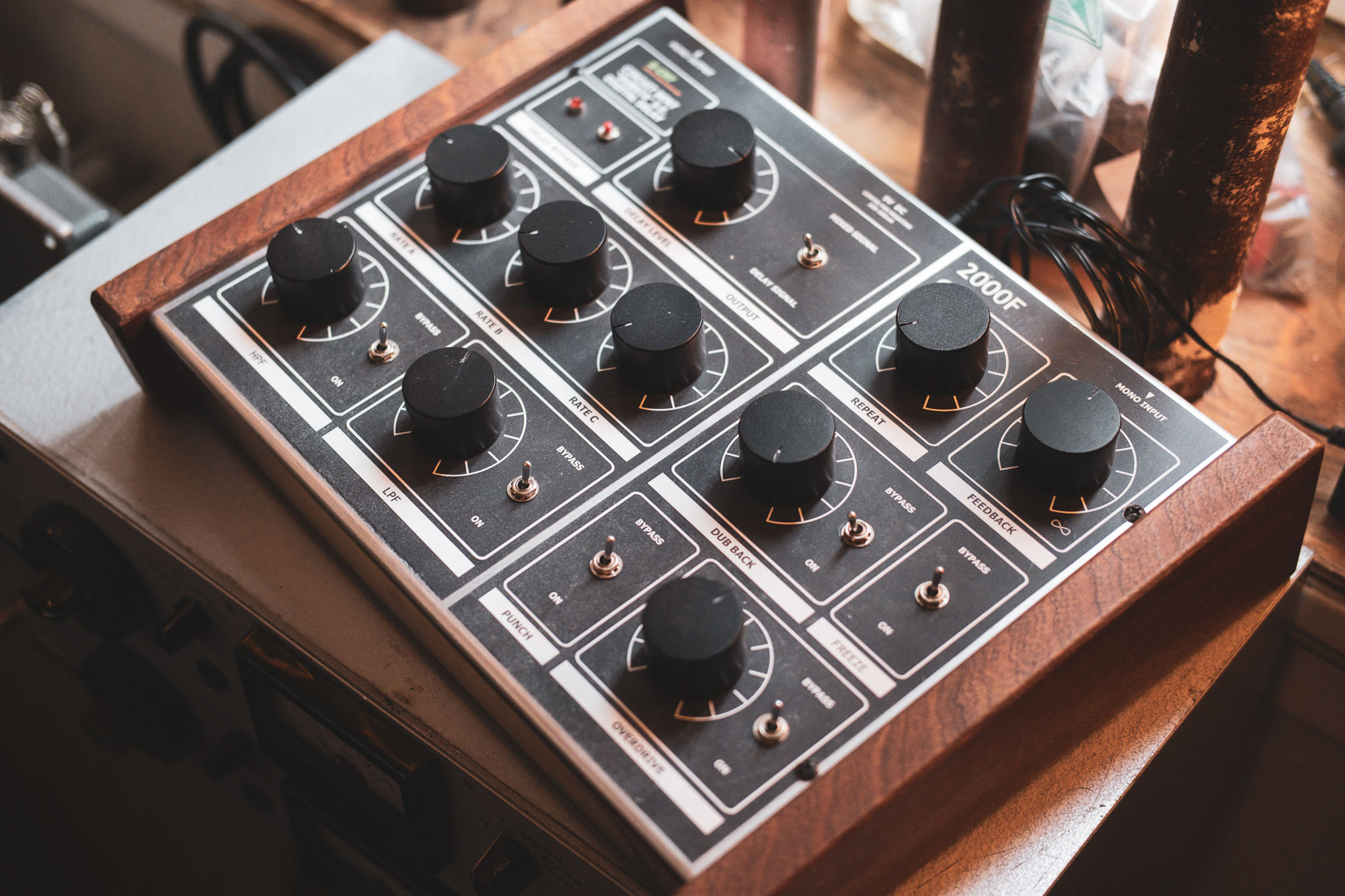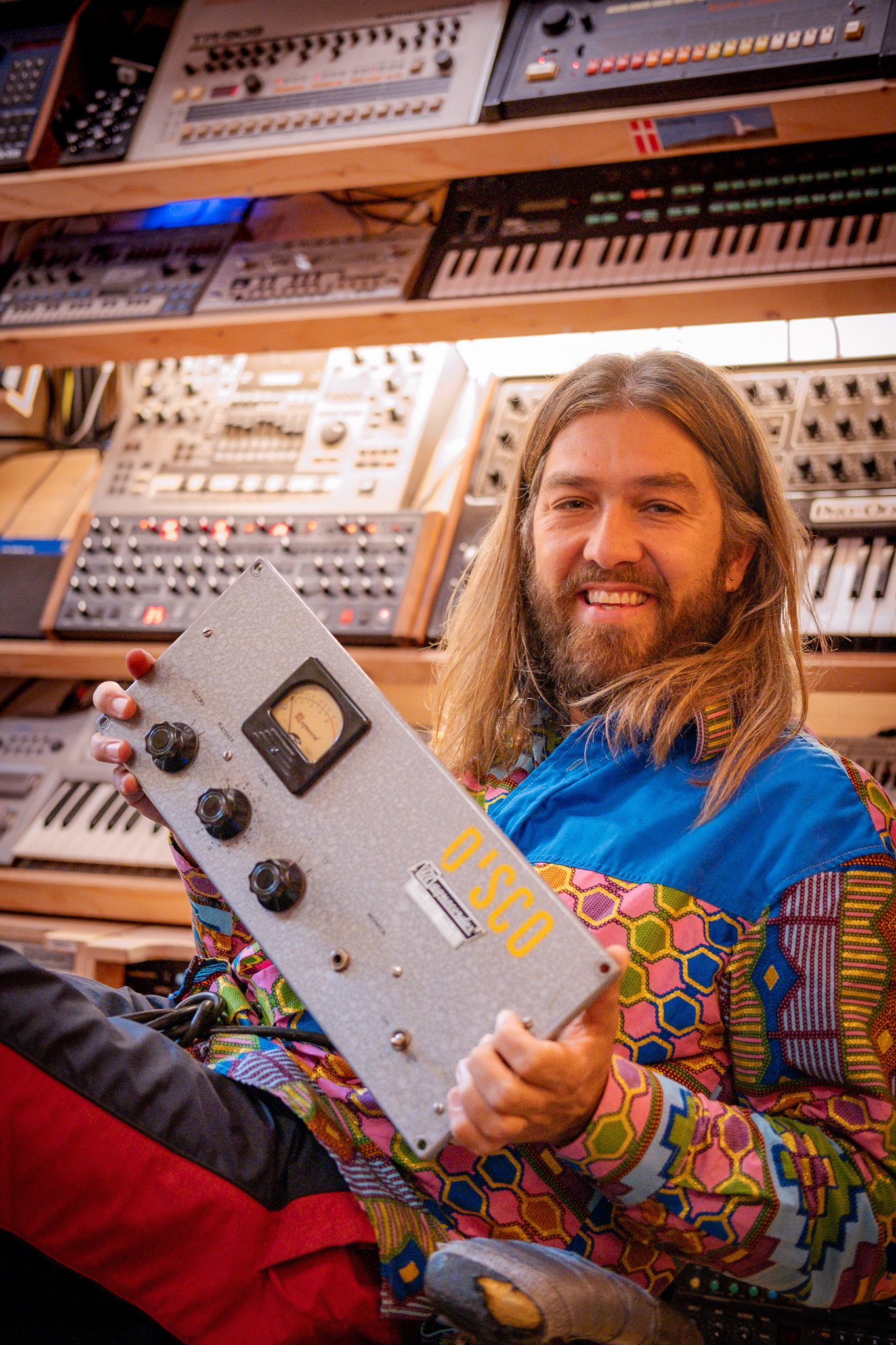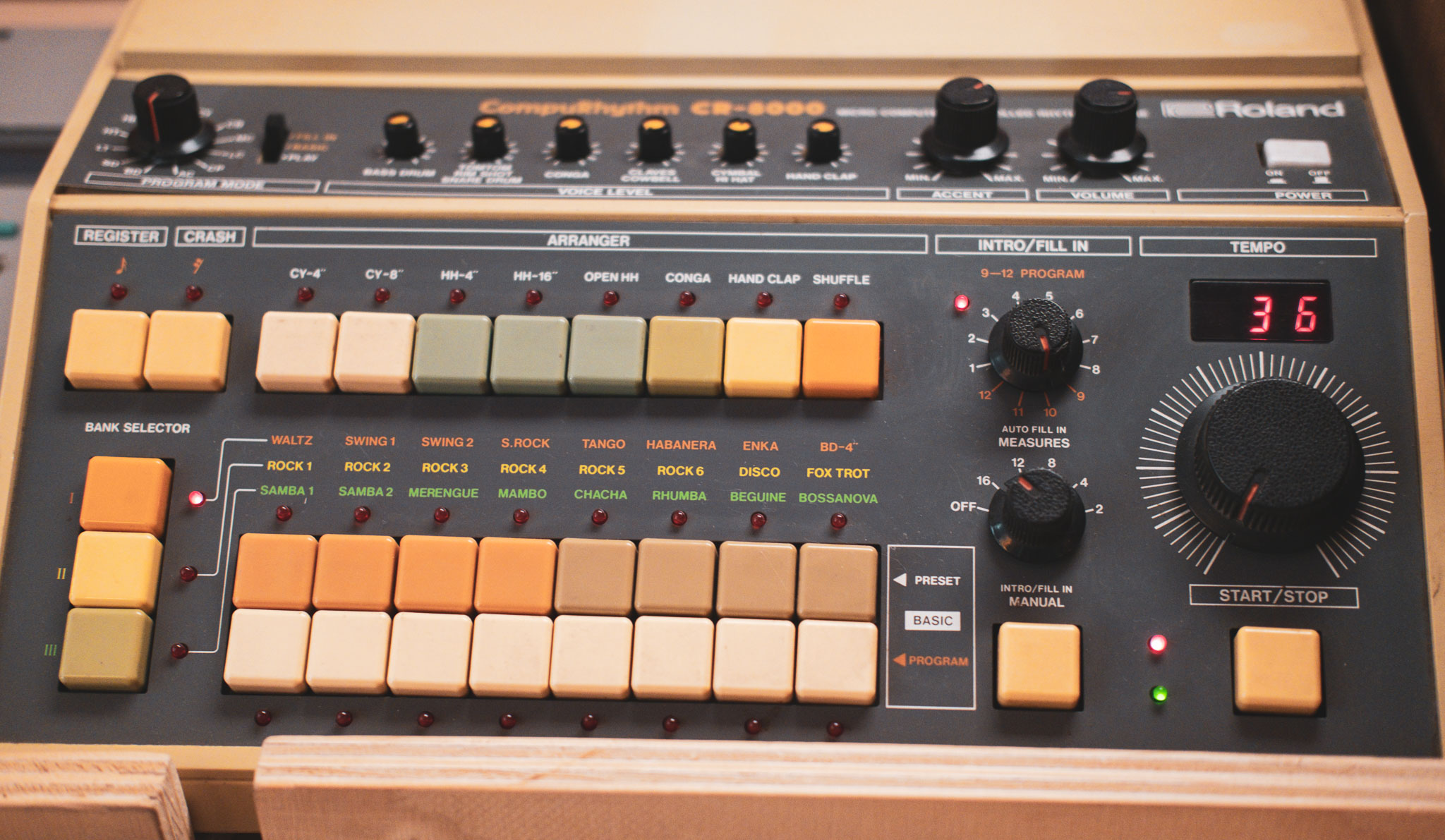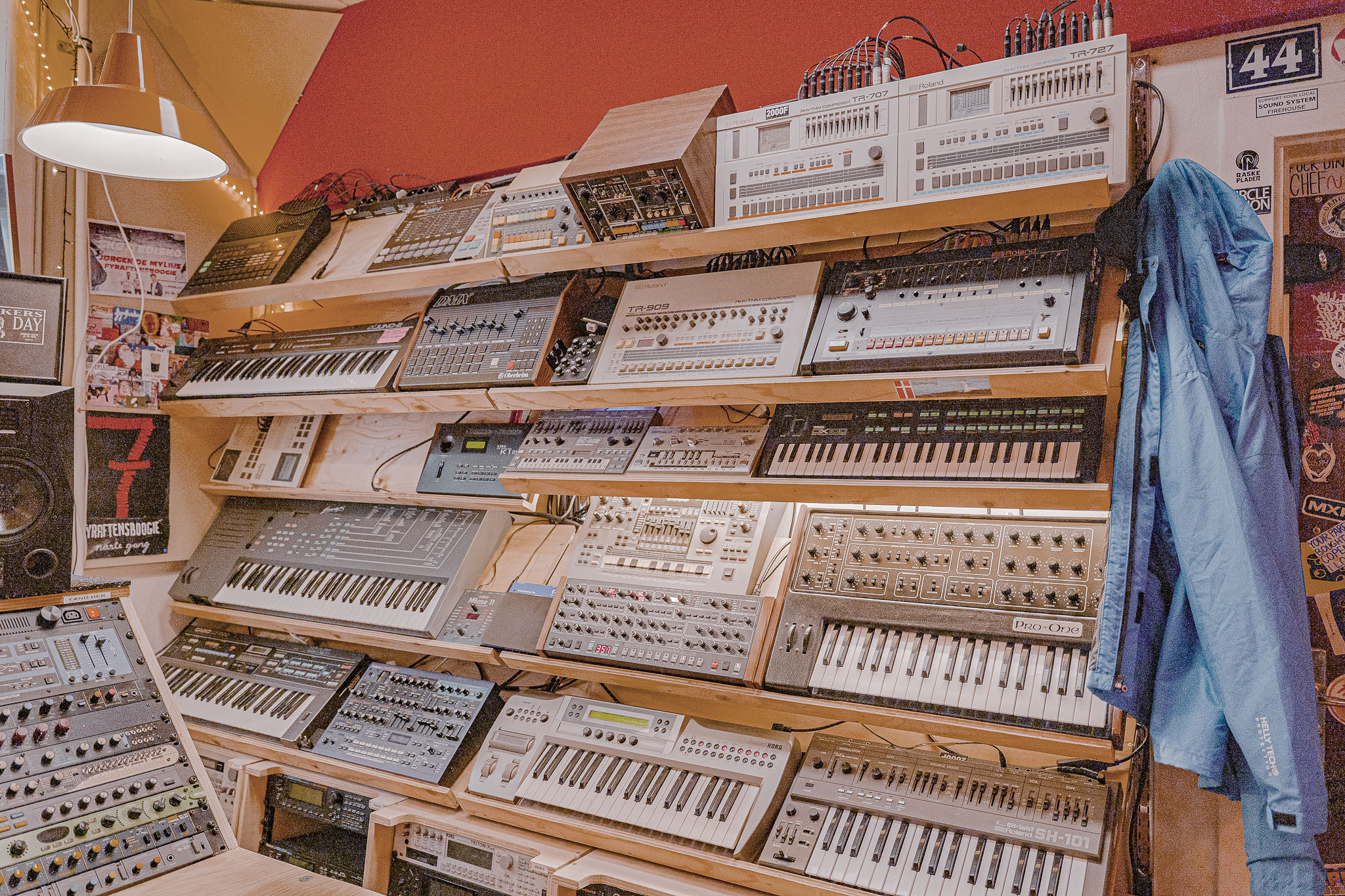1. Favourite knob or fader or switch on a piece of gear and why?

That’s not something I’ve thought of before. I definitely have a least favourite and that’s the alpha dial on my Juno 2. But if I were to pick one it would be the very retro switches on the Thermionic Culture Vulture and especially the MIDIMini V30. In the US switches turn on when you flick them up, unlike most that turn on when you switch them down. Flicking them up reminds me of old Sci-Fi movies so for a brief moment I feel like an astronaut.

2. Do you have an ‘almost’ perfect bit of kit? What would you change?
For what it does you can’t beat the Minimoog. I know it’s a cliche but there’s a reason it’s such a classic. I have the 2016 reissue, and when I first used it I was taken aback by how much the experience of interacting with the interface influences your behavior. If your first few years with a synth were trying to program the Juno 2 and navigating Roland’s 90’s digital interfaces on tiny screens, a big old simple analogue is a revelation. You spend much more time sculpting tones, and it’s so self explanatory there’s no need for presets. It’s instant gratification, but more modulation options would improve it. I have recently purchased an AJH Synth MiniMod Keyz, and that takes the Minimoog to a whole new level. It’s not as instant, but there are new worlds to explore. A bit like a Minimoog and Odyssey combined in a modular setting. Wonderful!

3. What setup do you bring on holiday or tour or commute etc.?
It very much depends on what I’m doing at the time. Last year I took the Polyend Play with me on a few trips, and this year I’ve been playing with the Sonicware ELZ_1 Play. It has to be something I can produce more than a single tone at a time and something I can run on batteries. I did try doing stuff on my a few years ago iPad, but it soon got confusing and too technical to be anything but frustrating, although there are some amazing apps like the Animoog
4. What software do you wish was hardware and vice versa?
I love Arturia Pigments, which would be nice as hardware. I guess Waldorf Iridium is the closest as a physical instrument. Mainly though I think most well designed software works well precisely because its software, and a good piece of hardware works because of the physical interface, as software it would most likely be underwhelming. But if I had to choose, a Pigments synth and Iridium in software…. But then they’re almost the same thing!

5. Is there anything you regret selling… or regret buying?

I sold a Jupiter 4 and System 100 to a guy for £100 each on the same day. I was living in an apartment with no heating and he turned up in a Range Rover! Needs must and I needed synths that I could control via MIDI. In the days before DAWs when you were running 48 tracks live and using SMPTE to sync to 8-track tape, anything to make life easier was essential. I put the proceeds toward a BassStation Supernova which paid its dues for years. At the time it was the smart move, so I guess I can’t regret it too much, but everyone has a war story of selling classics for peanuts. Maybe I regret replacing the Jupiter 4 a few months ago. My younger self would be pulling his hair out at the price I paid!
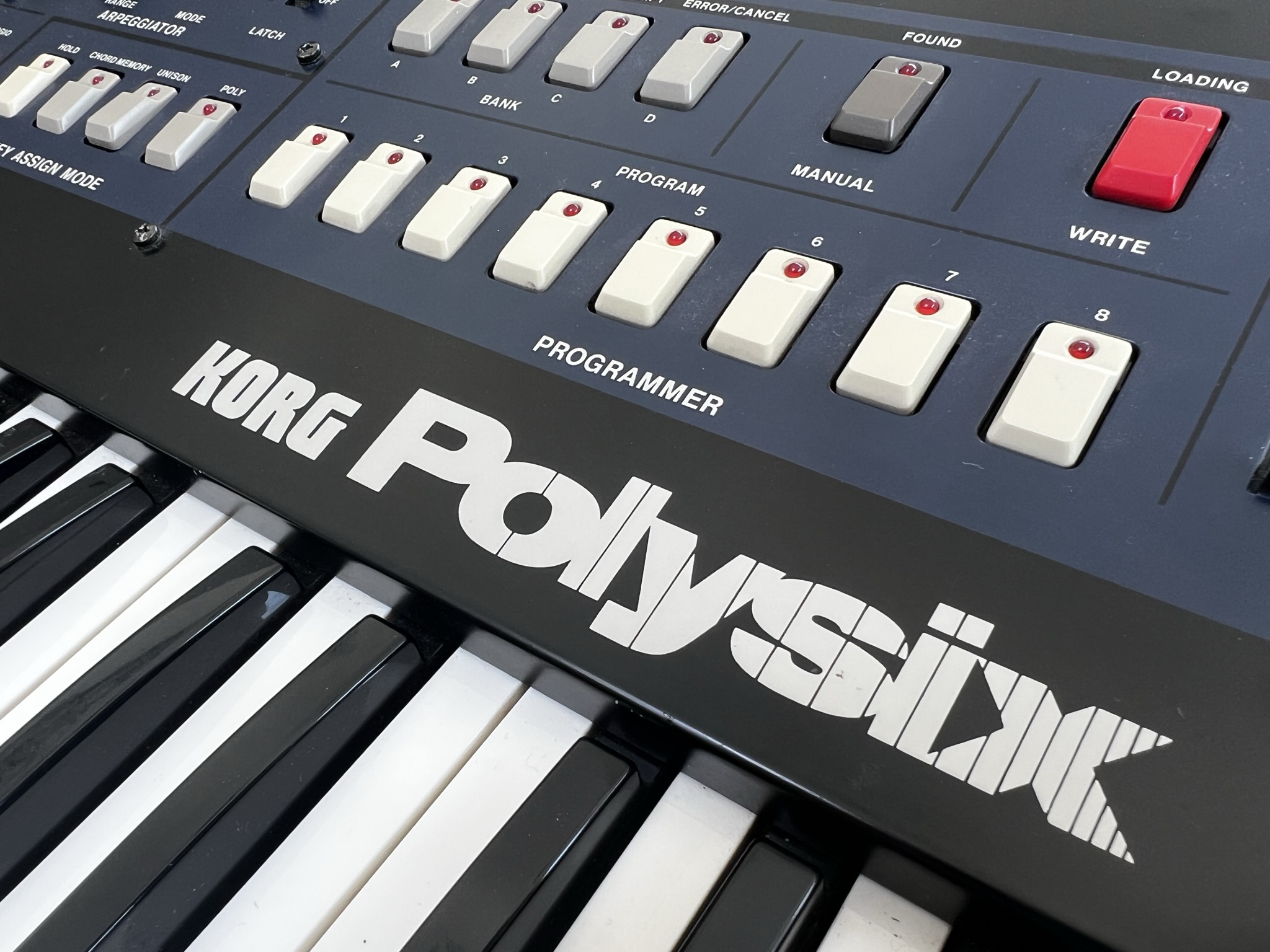
6. What gear has inspired you to produce the most music?

There’s been so many over the years. The Akai S950 and S3000 were integral before software replaced them. I hammered the life out of them, as well as the Supernova. But after selling most of my typical “90’s collection” and going almost fully in the box for a couple of years, I started buying hardware again. Each piece has its moment. The Prophet 08 was a source of constant inspiration, but was replaced by the Prophet 6 and OB6. They couldn’t compete in terms of modulation options which is when I started getting into some modular pieces. The reason I’ve ended up with such an assortment is so I can move regularly from one to another to avoid falling into the same routine.

7. If you had to start over, what would you get first?
If I had absolutely nothing the first thing would obviously be a computer. The studio I built in the 90s will have cost around £40k, which would be around £94k in today’s terms. Now you can have the same with a cheap PC, Roland Cloud and a couple of other subscriptions. It’s unbelievable really. So for hardware, I’d start with something that can take you to places you can’t go with a DAW. I’d probably go with something wild like the PWM Malevolent that’s so good at delivering those little sonic hiccups and dirt. It’s another texture that you’re not going to get from software. Be warned, it’s a dangerously addictive gateway drug into eurorack and hardware.

8. What’s the most annoying piece of gear you have, that you just can’t live without?
I would’ve said my Juno 2, but after picking up the Retroakctiv MPG50 controller it’s morphed into the perfect 80s/90s machine. The Virus TI took that spot for a while. It was so good that I used loads of instances on every track, but the latency was infuriating. Now my biggest nemesis is cabling. You can’t live without it but it causes so much grief, especially when like me you move stuff around a lot. Today for example, I found a couple of things that need attention on my Odyssey, one of which I thought was the HP filter being stuck at a minimum of 75% so everything sounded thin and weedy. After checking over it for an hour or so then booking it in for a service, I happened to knock the interface and the bass came booming back. The number of times MIDI cables, balanced versus unbalanced cables, 3.5 to 6.3mm adaptors or mono to stereo, XLR to jack etc. cause a dodgy connection that takes hours to track down is infuriating.

9. Most surprising tip or trick or technique that you’ve discovered about a bit of kit?
Understanding wavetables was a revelation. I bought my Microwave XT in 1998 and never truly understood it until years later. Reviewers were excited by user wavetables and I just didn’t get the hype. I’m now all over them, and made a video demoing how you can create wavetables from anything for anything. I worked with Groove Synthesis recently to help put my Prophet VS wavetables into the 3rd Wave in its PPG mode to give all those lovely 80s digital artifacts. It’s one of those ideas that only exists due to the limitations of the technology, and if that creative spark hadn’t happened at the time it would never have been developed.
Artist or Band name?
Starsky Carr
Genre?
Electronic .. is that too broad? Probably to the detriment of my musical career, I can’t do that thing were people seem to write variations on the same track a 100 different ways.
Selfie?

Where are you from?
Liverpool, UK.
How did you get into music?
I can’t remember a time when I wasn’t into music. It maybe a Liverpool thing, it feels like part of my DNA.
What still drives you to make music?
See above!! I’ve no idea I just feel compelled. I get edgy if I’ve not done something for a while.
How do you most often start a new track?
Almost always by fiddling around, looking for textures, tones and melodies that lead me somewhere.
How do you know when a track is finished?
They’re never truly finished, there’s always something else to do. But when you think you’re now doing stuff that only 1% of people will notice, when you find you’re spending 10 minutes tailing the delay perfectly, making minute changes to filter sweeps, adding another level of saturation or EQ, it’s time to step back and put the brush down.
Show us your current studio







Best creative advice that you’ve ever heard?
Whatever you do you have to like it. You have to be prepared to stand in front of an audience and play it. If you’re not proud of it, fix it or ditch it. I can’t attribute that to anyone in particular, it’s more a distillation of many pieces of advice that resonated.

Promote your latest thing… Go ahead, throw us a link.
YouTube: https://www.youtube.com/starskycarr









